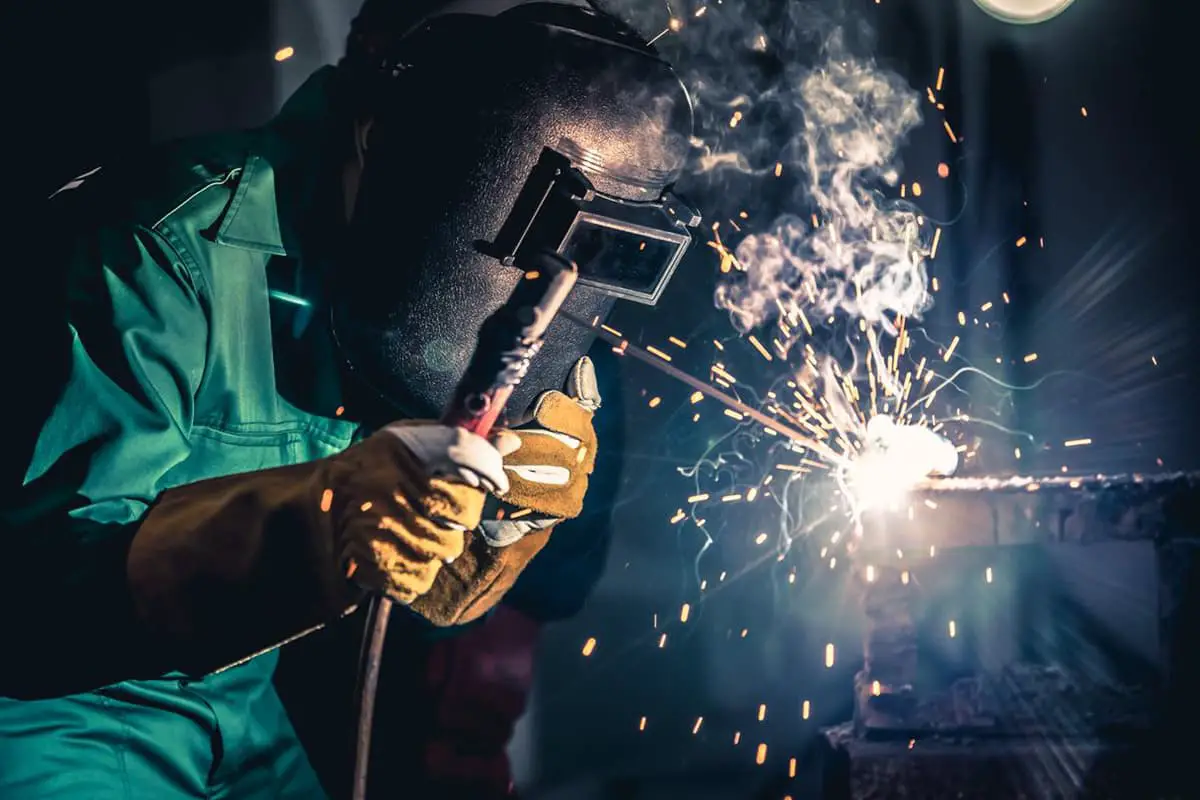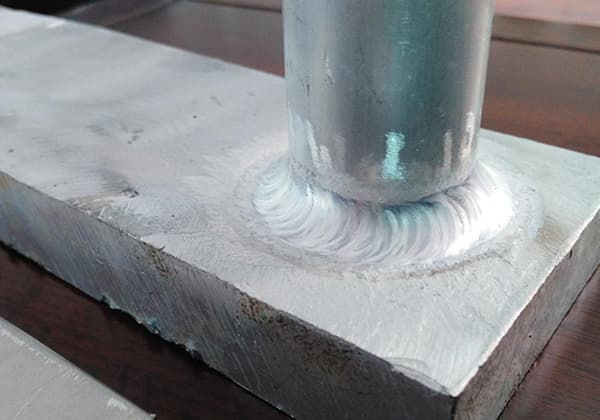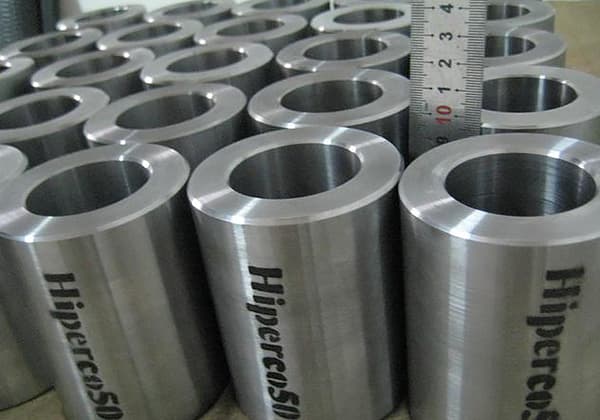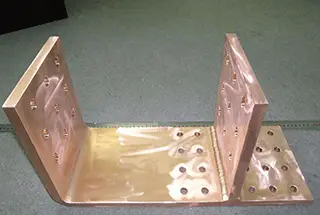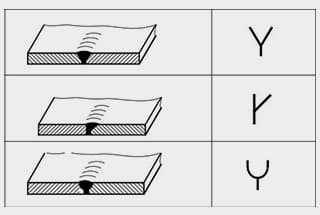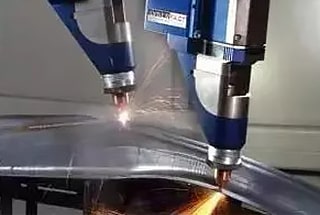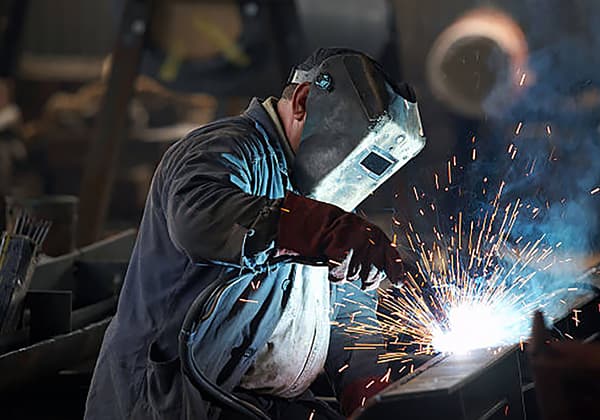
Welding defects can compromise the integrity of metal structures, posing serious risks. This article highlights seven common welding defects, such as pores and cracks, and provides practical tips for preventing them. By understanding the causes and solutions for each defect, welders can improve their techniques and ensure stronger, more reliable welds. Discover how to achieve flawless welding and enhance the quality of your projects.
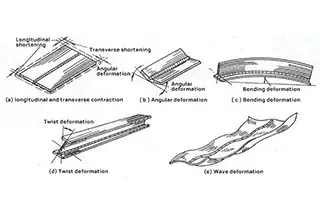
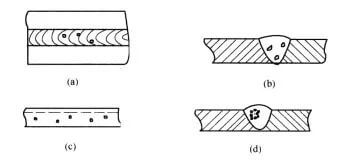
(a) External pores; (b) internal pores; (c) continuous pores; (d) dense pores
| Welding mode | Cause of occurrence | Preventive measures |
| Manual arc welding | (1) The welding rod is poor or wet. (2) The weldment has moisture, oil stain or rust. (3) Welding speed is too fast. (4) The current is too strong. (5) The arc length is not suitable. (6) The thickness of weldment is large and the metal cooling is too fast. | (1) Select appropriate welding rod and pay attention to drying. (2) Clean the welded part before welding. (3) Reduce the welding speed so that the internal gas can escape easily. (4) Use the appropriate current recommended by the manufacturer. (5) Adjust the appropriate arc length. (6) Perform proper preheating. |
| CO2 gas shielded welding | (1) The base metal is dirty. (2) The welding wire is rusty or the welding flux is wet. (3) Poor spot welding and improper selection of welding wire. (4) The dry extension length is too long and the CO2 gas protection is not careful. (5) The wind speed is high and there is no wind protection device. (6) Welding speed is too fast and cooling speed is too fast. (7) Sparks splashed on the nozzle, causing gas turbulence. (8) The gas has poor purity and contains a lot of sundries (especially moisture). | (1) Pay attention to cleaning the welded parts before welding. (2) Select appropriate welding wire and keep it dry. (3) The spot weld bead shall be free of defects, and shall be cleaned at the same time, and the size of welding wire used shall be appropriate. (4) Reduce the dry extension length and adjust the appropriate gas flow. (5) Install wind shielding equipment. (6) Reduce the speed to allow the internal gas to escape. (7) Pay attention to remove the welding slag at the nozzle and apply splash adhesion inhibitor to prolong the service life of the nozzle. (8) The purity of CO2 is more than 99.98% and the moisture is less than 0.005%. |
| Submerged arc welding | (1) There is rust, oxide film, grease and other organic impurities in the weld. (2) The flux is wet. (3) The flux is contaminated. (4) Welding speed is too fast. (5) Insufficient flux height. (6) The height of the flux is too high, so that the gas is not easy to escape (especially in the case of fine flux particle size). (7) The welding wire is rusted or stained with oil. (8) Improper polarity (especially contamination during docking will produce pores). | (1) The weld shall be ground or burned with flame, and then removed with wire brush. (2) Dry at about 300 ℃ (3) Pay attention to the storage of flux and the cleaning of the area near the welding part to avoid the mixing of sundries. (4) Reduce welding speed. (5) The rubber nozzle of flux outlet shall be adjusted higher. (6) The rubber tube at the flux outlet shall be adjusted lower, and the appropriate height shall be 30 ~ 40mm in the case of automatic welding. (7) Replace with clean welding wire. (8) Change DC Forward connection (DC -) to DC reverse connection (DC +). |
| Poor equipment | (1) The pressure reducing gauge is cooled and the gas cannot flow out. (2) The nozzle is blocked by sparks and splashes. (3) The welding wire has oil and rust. | (1) When there is no electric heater attached to the gas regulator, install an electric heater and check the flow of the meter at the same time. (2) Always remove the spray from the nozzle. And coated with splash adhesion inhibitor. (3) Do not touch oil when storing or installing welding wires. |
| Self shielded flux cored wire | (1) The voltage is too high. (2) The protruding length of welding wire is too short. (3) There is rust, paint and moisture on the surface of the steel plate. (4) Too much inclination of welding gun drag angle. (5) The moving speed is too fast, especially transverse welding. | (1) Reduce the voltage. (2) Use according to the instructions of various welding wires. (3) Clean before welding. (4) Reduce the drag angle to about 0 ° ~ 20 °. (5) Adjust properly. |
Related reading: How to Choose the Right Welding Rod?

| Welding mode | Cause of occurrence | Preventive measures |
| Manual arc welding | (1) The current is too strong. (2) Electrodes are not suitable. (3) The arc is too long. (4) Improper operation method. (5) The base metal is dirty. (6) Overheating of base metal. | (1) Use a lower current. (2) Select appropriate types and sizes of welding rods. (3) Maintain proper arc length. (4) Adopt correct angle, slower speed, shorter arc and narrower operation method. (5) Remove oil stains or rust from the base metal. (6) Use electrodes with smaller diameter. |
| CO2 gas shielded welding | (1) The arc is too long and the welding speed is too fast. (2) During fillet welding, the welding rod is not aligned correctly. (3) Vertical welding swing or poor operation, resulting in insufficient filling of both sides of the weld bead and undercut. | (1) Reduce arc length and speed. (2) During horizontal fillet welding, the position of welding wire shall be 1 ~ 2mm away from the intersection. (3) Correct the operation method. |

| Welding mode | Cause of occurrence | Preventive measures |
| Manual electricityArc welding | (1) The welding slag of the previous layer is not completely removed. (2) The welding current is too low. (3) Welding speed is too slow. (4) The electrode swings too wide. (5) Poor weld combination and design.clearance. | (1) Completely remove the welding slag of the previous layer. (2) Adopt higher current. (3) Improve welding speed. (4) Reduce the swing width of welding rod. (5) Correct proper groove angle and |
| CO2 gas arc welding | (1) The inclination (downhill) of base metal makes the welding slag advance. (2) After the previous welding, the welding slag is not cleaned. (3) The current is too small, the speed is slow, and there is a lot of welding. (4) When welding with forward method, the welding slag in the slot is much ahead. | (1) Place the weldment in a horizontal position as far as possible. (2) Pay attention to the cleanliness of each weld bead. (3) Increase the current and welding speed to make the welding slag float easily. (4) Improve welding speed. |
| Submerged arc welding | (1) The welding direction is inclined to the base metal, so the welding slag flows ahead. (2) During multi-layer welding, the grooving surface is dissolved by the welding wire, and the welding wire is too close to the side of the grooving. (3) Slag inclusion is easy to occur at the place with guide plate at the starting point of welding. (4) When there is small welding slag in the second layer, it is easy to produce cracks. (5) The welding speed is too low to make the welding slag advance. (6) Finally, the arc voltage of the finished layer is too high, which makes the free welding slag stir at the end of the weld bead. | (1) Change the welding direction to the opposite direction, or change the base metal to the horizontal direction as far as possible. (2) The distance between the slotted side and the welding wire shall be at least greater than the diameter of the welding wire. (3) The thickness and slotting shape of the guide plate shall be the same as that of the base metal. (4) Increase the welding current to make the residual welding slag easy to melt. (5) Increase welding current and welding speed. (6) Reduce the voltage or increase the welding speed. If necessary, the cover layer is changed from single pass welding to multi pass welding. |
| Self shielded flux cored wire | (1) The arc voltage is too low. (2) Improper arc swing of welding wire. (3) The welding wire extends too long. (4) The current is too low and the welding speed is too slow. (5) The first welding slag was not fully removed. (6) The first course is poorly combined. (7) The groove is too narrow. (8) The weld is inclined downward. | (1) Adjust properly. (2) Practice more. (3) Follow the instructions of various welding wires. (4) Adjust welding parameters. (5) Completely clear (6) Use proper voltage and pay attention to arc swing. (7) Correct proper groove angle and clearance. (8) Flatten or move faster. |
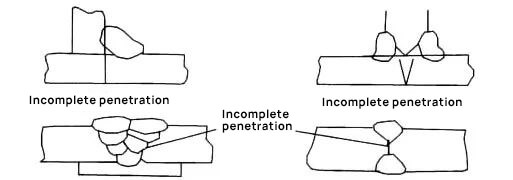
| Welding mode | Cause of occurrence | Preventive measures |
| Manual arc welding | (1) Improper selection of welding rod. (2) The current is too low. (3) The welding speed is too fast, the temperature rise is not enough, and the welding speed is too slow. The arc impulse is blocked by the welding slag and cannot be given to the base metal. (4) Incorrect weld design and combination. | (1) Select the welding rod with relatively penetrating force. (2) Use appropriate current. (3) Use appropriate welding speed instead. (4) Increase the degree of slotting, increase the gap and reduce the root depth. |
| CO2 gas shielded welding | (1) The arc is too small and the welding speed is too low. (2) The arc is too long. (3) Poor slotting design. | (1) Increase welding current and speed. (2) Reduce the arc length. (3) Increase the degree of slotting. Increase gap and reduce root depth. |
| Self shielded flux cored wire | (1) The current is too low. (2) Welding speed is too slow. (3) The voltage is too high. (4) Improper arc swing. (5) Improper groove angle. | (1) Increase the current. (2) Improve welding speed. (3) Reduce the voltage. (4) Practice more. (5) Adopt a larger slotting angle. |

| Welding mode | Cause of occurrence | Preventive measures |
| Manual arc welding | (1) Weldments contain too much carbon, manganese and other alloy elements. (2) The welding rod is of poor quality or wet. (3) The restraint stress of weld is too large. (4) The material of the bus bar contains too much sulfur and is not suitable for welding. (5) Insufficient construction preparation. (6) The thickness of base metal is large and the cooling speed is too fast. (7) The current is too strong. (8) The first pass is insufficient to resist shrinkage stress. | (1) Use low hydrogen welding rod. (2) The welding rod shall be dry and suitable for use. (3) Improve the structural design, pay attention to the welding sequence, and carry out heat treatment after welding. (4) Avoid using bad steel. (5) Preheating or post heating shall be considered during welding. (6) Preheat the base metal and cool slowly after welding. (7) Use appropriate current. (8) The welding metal of the first welding must fully resist the shrinkage stress. |
| CO2 gas shielded welding | (1) If the slotting angle is too small, pear shaped and weld bead cracks will occur during high current welding. (2) The carbon content of base metal and other alloys are too high (weld bead and hot shadow area). (3) In multi-layer welding, the first pass is too small. (4) Improper welding sequence, resulting in too strong binding force. (5) The welding wire is wet and hydrogen invades the weld bead. (6) The sleeve plate is poorly connected, resulting in uneven height and stress concentration. (7) Due to excessive welding amount of the first layer, the cooling is slow (stainless steel, aluminum alloy, etc.). | (1) Pay attention to the matching of proper slotting angle and current, and increase the slotting angle if necessary. (2) Electrodes with low carbon content shall be used. (3) The first weld metal must be sufficiently resistant to shrinkage stress. (4) Improve the structural design, pay attention to the welding sequence, and carry out heat treatment after welding. (5) Pay attention to the storage of welding wire. (6) Pay attention to the accuracy of weldment assembly. (7) Pay attention to the correct current and welding speed. |
| Submerged arc welding | (1) The combination of welding wire and flux used for weld base metal is inappropriate (the carbon content of base metal is too large, and the manganese content of welding wire metal is too small). (2) The weld bead cools rapidly and hardens the heat affected zone. (3) The welding wire contains too much carbon and sulfur. (4) The weld bead force generated in the first layer of multi-layer welding is not enough to resist shrinkage stress. (5) Excessive penetration or segregation during fillet welding. (6) The welding construction sequence is incorrect and the binding force of base metal is large. (7) The weld bead shape is inappropriate, and the ratio of weld bead width to weld bead depth is too large or too small. | (1) When using welding wire with high manganese content, preheating measures shall be taken when the carbon content of base metal is high. (2) The welding current and voltage shall be increased, the welding speed shall be reduced, and the base metal shall be heated. (3) Replace the welding wire. (4) The welding metal of the first pass must fully resist the shrinkage stress. (5) Reduce the welding current and welding speed and change the polarity. (6) Pay attention to the specified construction methods and provide construction guidance for welding operation. (7) The ratio of weld bead width to depth is about 1:1:25, the current decreases and the voltage increases. |
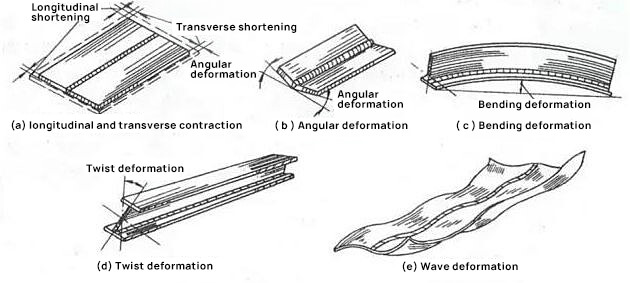
| Welding mode | Cause of occurrence | Preventive measures |
| Hand weldingCO2 gas shielded weldingSelf shielded flux cored wire weldingAutomatic submerged arc welding | (1) Too many welding layers. (2) Improper welding sequence. (3) Insufficient construction preparation. (4) Base metal cooling is too fast. (5) Overheating of base metal. (sheet) (6) Improper weld design. (7) Too much metal is welded. (8) The way of restraint is not accurate. | (1) Use electrodes with larger diameter and higher current. (2) Correct welding sequence (3) Before welding, fix the weldment with a fixture to avoid warping. (4) Avoid cooling too fast or preheating the base metal.(5) Select welding materials with low penetration. (6) Reduce weld gap and slotting degree. (7) Pay attention to the welding size and do not make the weld bead too large. (8) Pay attention to the fixing measures to prevent deformation. |
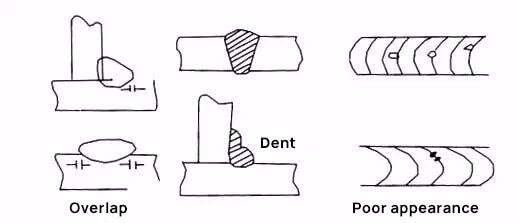
| Welding mode | Cause of occurrence | Preventive measures |
| Overlap | (1) The current is too low. (2) Welding speed is too slow. | (1) Use appropriate current. (2) Use the appropriate speed. |
| Poor appearance and shape of weld bead | (1) Poor welding rod. (2) Improper operation method. (3) The welding current is too high and the electrode diameter is too thick. (4) Weldment overheating. (5) In the weld bead, the fusion filling method is poor. (6) The conductive nozzle is worn. (7) The extension length of welding wire remains unchanged. | (1) Dry electrodes of appropriate size and good quality shall be selected. (2) Adopt uniform and appropriate speed and welding sequence. (3) Select welding with appropriate current and diameter. (4) Reduce the current. (5) Practice more. (6) Replace the conductive nozzle. (7) Maintain fixed length and proficiency. |
| Dent | (1) Improper use of welding rods. (2) The welding rod is wet. (3) Base metal cooling is too fast. (4) Unclean electrode and segregation of weldment. (5) The carbon and manganese content of weldment is too high. | (1) Use appropriate welding rod. If it cannot be eliminated, use low hydrogen welding rod. (2) Use dried electrodes. (3) Reduce the welding speed and avoid quenching. It is best to preheat or post heat. (4) Use good low hydrogen electrode. (5) Electrodes with high basicity shall be used. |
| Arc deviation | (1) During DC welding, the magnetic field generated by the weldment is uneven, which deflects the arc. (2) Poor position of grounding wire. (3) The trailing angle of the welding gun is too large. (4) The extension length of welding wire is too short. (5) The voltage is too high and the arc is too long. (6) The current is too high. (7) Welding speed is too fast. | (1) Place a ground wire on one side of the arc, or weld on the other side, or use a short arc, or correct the magnetic field to make it uniform, or use AC welding (2) Adjust the position of grounding wire. (3) Reduce the drag angle of the welding gun. (4) Increase the extension length of welding wire. (5) Reduce voltage and arc. (6) Adjust and use appropriate current. (7) Slow welding speed. |
| Burn through | (1) When there is slotted welding, the current is too large. (2) The weld gap is too large due to poor slotting. | (1) Reduce the current. (2) Reduce weld gap. |
| Uneven weld bead | (1) The conductive nozzle is worn and the welding wire output swings.(2) Unskilled welding gun operation. | (1) Replace the welding nozzle with a new one.(2) Practice more. |
| Welding tears | (1) The current is too large and the welding speed is too slow. (2) The arc is too short and the weld bead is too high. (3) Improper alignment of welding wire. (during fillet welding) | (1) Select the correct current and welding speed. (2) Increase the arc length. (3) The welding wire shall not be too far from the intersection. |
| Excessive spark splash | (1) Poor welding rod. (2) The arc is too long. (3) The current is too high or too low. (4) The arc voltage is too high or too low. (5) The welding wire protrudes too long. (6) The welding gun tilts excessively and the drag angle is too large. (7) Excessive moisture absorption of welding wire. (8) The welding machine is in poor condition. | (1) Use suitable dry welding rod. (2) Use a shorter arc. (3) Use appropriate current. (4) Adjust properly. (5) Follow the instructions of various welding wires. (6) Keep as vertical as possible and avoid excessive tilting. (7) Pay attention to the storage conditions of the warehouse. (8) Repair and pay attention to maintenance on weekdays. |
| The weld bead is serpentine. | (1) The welding wire extends too long. (2) The welding wire is twisted. (3) Poor linear operation. | (1) Appropriate length shall be adopted, such as solid welding wire, which extends 20 ~ 25mm in case of high current. During self shielded welding, the extension length is about 40 ~ 50mm. (2) Replace the welding wire with a new one or correct the distortion. (3) When operating in a straight line, the welding gun shall be kept vertical. |
| Arc instability | (1) The conductive nozzle at the front end of the welding gun is much larger than the core diameter of the welding wire. (2) The conductive nozzle is worn. (3) The welding wire curls. (4) The welding wire conveyor does not rotate smoothly. (5) The groove of welding wire conveying wheel is worn. (6) The pressure wheel is not well pressed. (7) The resistance of conduit joint is too high. | (1) The core diameter of welding wire must match with the conductive nozzle. (2) Replace the conductive nozzle. (3) Curl and straighten the welding wire. (4) Add oil to the conveyor shaft to lubricate the rotation. (5) Replace the conveyor wheel. (6) The pressure should be appropriate, too loose, poor wire feeding, too tight, and the welding wire is damaged. (7) If the conduit is bent too much, adjust to reduce the bending amount. |
| Arc between nozzle and base metal | (1) Short circuit between nozzle, conduit or conductive nozzle. | (1) Excessive sparks and splashes sticking to the nozzle must be removed, or use the ceramic tube with insulating protection of the welding gun. |
| Welding gun nozzle overheating | (1) The cooling water cannot flow out fully. (2) Excessive current. | (1) The cooling water pipe is blocked. If the cooling water pipe is blocked, it must be removed to make the water pressure rise and flow normal. (2) The welding gun shall be used within the allowable current range and utilization rate. |
| The welding wire sticks to the conducting nozzle | (1) The distance between the conductive nozzle and the base metal is too short. (2) Excessive conduit resistance and poor wire feeding. (3) The current is too small and the voltage is too high. | (1) Use the appropriate distance or a little longer to start the arc, and then adjust to the appropriate distance. (2) Clear the inside of the conduit to enable smooth delivery. (3) Adjust the appropriate current and voltage value. |

